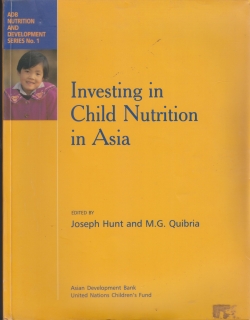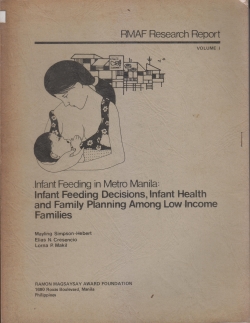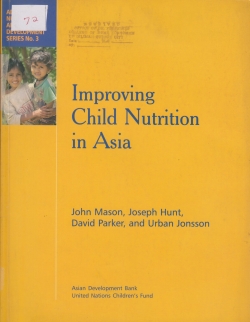Family Structure and Child Nutrition: Dynamics and Processes in a Low-Income Urban Community - 1287

Type
Thesis
Authors
Querubin ( Milagross P. Querubin )
Category
Unknown
[ Browse Items ]
Publication Year
1998
Pages
1-209
Subject
Pre-school children--Philippines--Nutrition ; Family--Philippines ; Ingestion disorders in children--Philippines ; Poor--Philippines--Nutrition
Abstract
This Study determined the effect of family structure on nutritional status and nutrient intake of preschool children. It is also examined family dynamics in the provision of nutritional care to explain the effect of family structure. Quantitative and qualitative data were collected from 142 preschool children and their mothers from 95 families in a low-income urban community. Three indicators of family structure were used: family type (nuclear and extended); family form (two-parent and solo-parent); and family headship (male, joint and female-headed). Nutritional status of the preschool children was evaluated using anthropometric data. The standard deviation scores (z-scores) of the preschool children’s weight-for-age, height-for-age were calculated using the NCHS reference values. Nutrient intake was determined using semi-quantitative food frequency questionnaire. Preschool children from extended families were heavier for their age and had higher energy intake than their counterparts from the nuclear families. Preschool children from the female headed households had lower intake for Vitamin A compared with those from the male-headed and jointly headed families. Family form was not a significant predictor of nutritional status and nutrient intake of the preschool children. Controlling for the effect of selected socio-demographic variables, the effect of family type on nutritional status and energy intake and female headship on Vitamin A intake remained significant. Variations in the provision of nutritional care explain the effect of family type. Preschool children from extended families scored higher in the nutritional care index due to longer duration of breastfeeding, more variety in the weaning food and availability of other persons assisting the mother in child care. Less frequency of eating green leafy and yellow vegetables explain the lower Vitamin A intake among preschool children from female-headed households. The food consumption pattern of the preschool children from female-headed households indicates that as the mothers performs both economic and domestic responsibilities, tradeoffs occur which do not necessarily benefit the child. Results of the study imply that nutrition programs must be re-oriented towards strengthening the family support systems that enhance nutritional care.
Biblio Notes
Querubin, Milagros P. (December 1998). Family Structure and Child Nutrition: Dynamics and Processes in a Low-Income Urban Community
Number of Copies
1
| Library | Accession No | Call No | Copy No | Edition | Location | Availability |
|---|---|---|---|---|---|---|
| Main | 751 | LG 996 1998 N87 Q47 | 1 | Yes |




